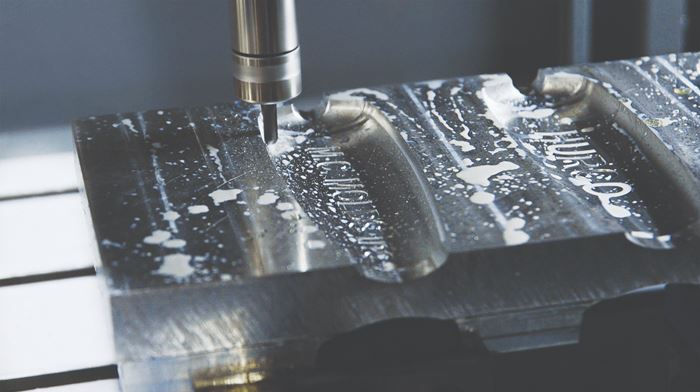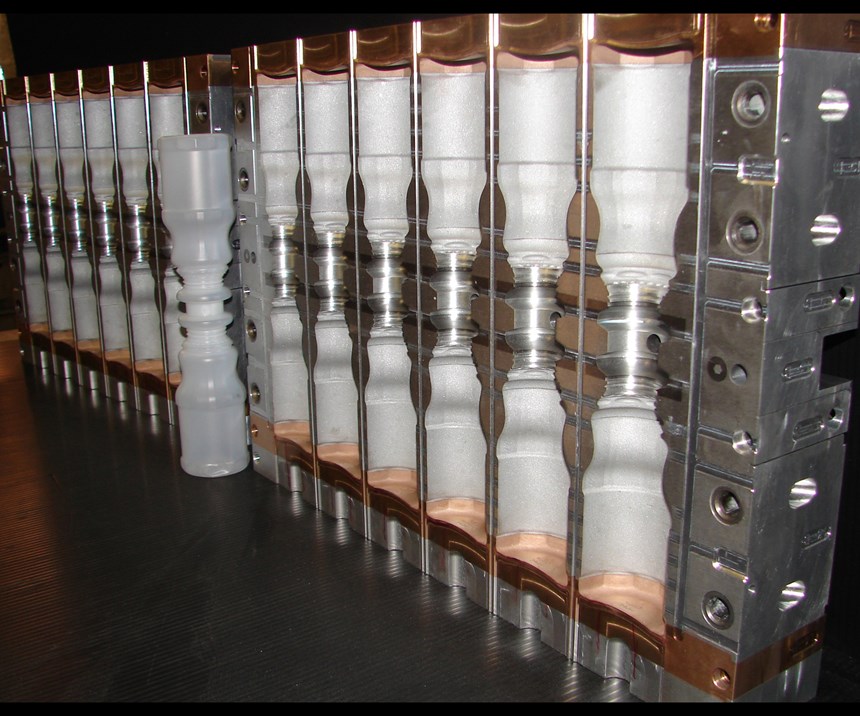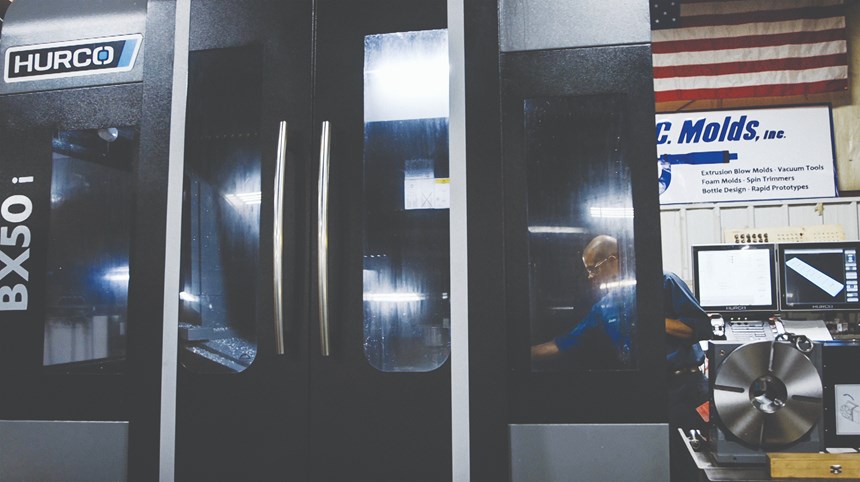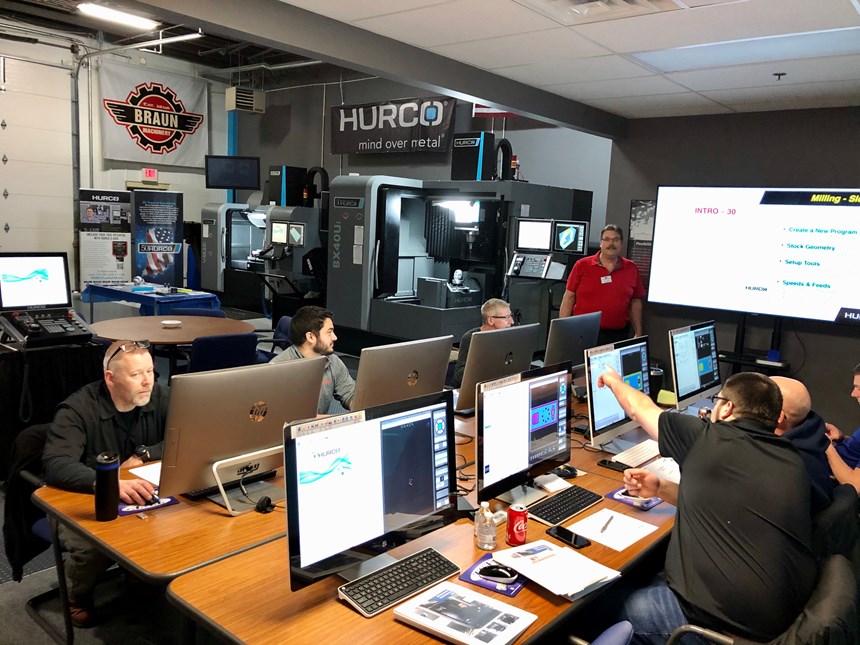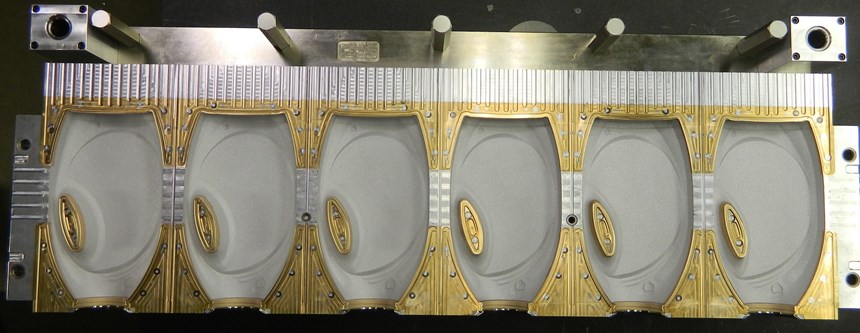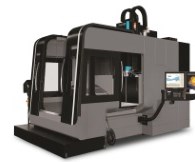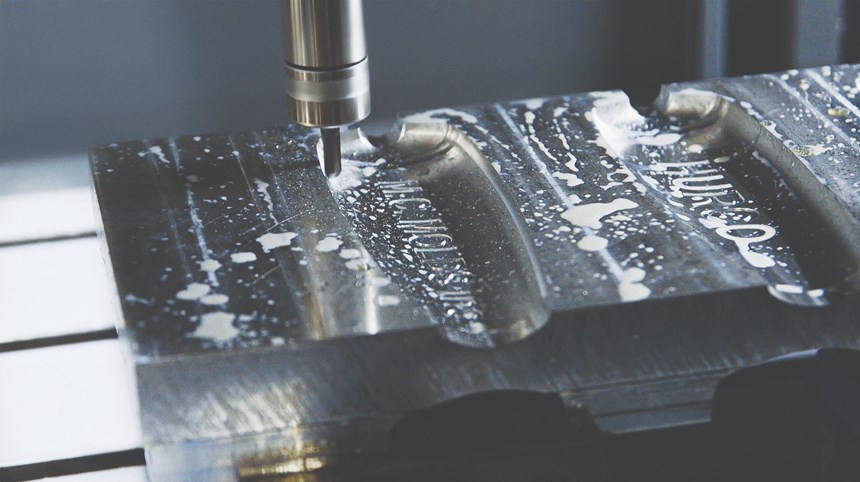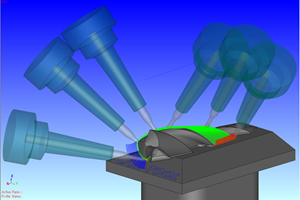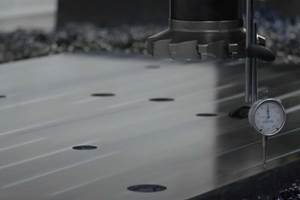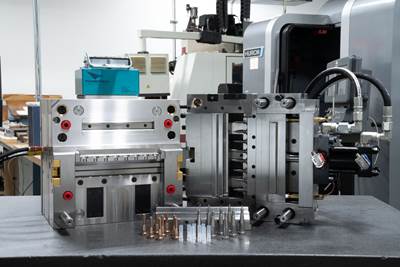Share
Read Next
M.c. molds inc uses hurco machine tool and increases capabilities
M.C. Molds Inc. (Williamston, Michigan) was cofounded by Robert Palazzolo in 1984 to serve the blow molding industry. Not only is the state home to many automotive, furniture and medical device companies, but it also has consumer packaging companies that needed and wanted a local toolmaker who understood blow molding and could make effective tooling for it.
Although the company also designs and produces molds for vacuum forming and thermoset urethane foam, and offers custom machining to other tool & die shops, M.C. Molds has stuck close to its roots. Today, it designs and manufactures molds in aluminum, beryllium-copper and stainless steel for extrusion and injection blow molding customers globally in the packaging, medical, automotive, agriculture, lawn and garden, toys/ornaments and laboratory-equipment markets, and also designs blow-molded bottles. A sister company — formed by another Palazzolo in 1992 in Williamston — called JBJ Products & Machinery Inc. (JBJ) produces downstream trimming machines and fixtures for blow molding customers. Last year’s workload was high enough that M.C. Molds ran three shifts/day, six days/week.
Long-Stroke Blow Molding
As demand for plastic packaging — especially in the personal-care segment — escalated, blow molding machinery OEMs introduced double-shuttle long-stroke blow molding machines two decades ago to increase machine capacity. Most commonly found on high-volume dedicated extrusion blow molding lines, the machines are equipped with two sets of molds — which may be single cavity, but more commonly are multicavity — that slide back and forth on a shuttle while the blow molding machine drops multiple parisons simultaneously. As parisons reach the desired length, the mold on the left parts and slides to the right to envelop the parisons, closing and trimming them before sliding back to its original position as resin freezes off and parts are ejected. As the first mold returns to the left, the machine drops another set of parisons, and the second tool on the right opens, slides to the left, closes and repeats the process.
“As blow molding machine manufacturers continue to add parisons to increase output, mold length requirements extend accordingly, and, before you know it, your existing machining envelope is less capable of cutting those tools out of one single piece,” Joe Palazzolo, M.C. Molds general manager-manufacturing explains. “Over time, you either have to upgrade your equipment or make tools in multiple pieces. And you may find yourself unable to bid on the largest molds anymore.” That’s the position M.C. Molds found itself in circa 2018 when the company decided to purchase a new machining center.
Keeping It in the Family
The M.C. Molds team knew what it wanted. “The things we looked for in a new machine were quality of construction, versatility of the control, and we knew we wanted a bigger, more robust machine,” David Keesaer, M.C. Molds vice-president operations explains. “Once tool design is complete, and it goes out to the machine level, we do everything we can in one setup to ensure alignment of both those tools. Before we purchased our new machine, we couldn’t do large molds. We couldn’t do one big, long, multi-cavity tool.”
Another challenge was floor space. At that point, M.C. Molds still shared space with sister company JBJ in a 12,500-square-foot/1,161-square-meter building that didn’t have especially wide doors (JBJ has since moved nearby to its own building).
“Because we wanted faster metal removal rates, as well as a bigger machining envelope, great surface finishes, and a good price point, we looked at double-column, bridge-style machining centers that were more robust and could run at higher rpm without risking tool growth,” Palazzolo adds.
Many people had opinions on what they should buy. JBJ was a long-time customer of Hurco (Indianapolis, Indiana) and had several Hurco machines in the shared space. Additionally, another Palazzolo family member worked in a lab equipped with Hurcos at nearby Michigan State University (East Lansing, Michigan). And M.C. Molds itself had purchased a three-axis, high-speed milling machine from Hurco a year before. While they were pleased with their VMXi60 model, that machine didn’t have enough travel to cut the largest blow molds the company was being asked to produce.
M.C. Molds turned to distributor Braun Machinery in Grand Rapids, Michigan, for help deciding which model, out of the nearly 80 that Hurco currently produces, would best meet their needs. Braun had helped M.C. Molds select its first Hurco and is one of Hurco’s oldest and most successful distributors. A full-service operation, Braun also provides remote diagnostics, machine servicing and training,
After meeting with M.C. Molds’ team in Williamston to learn more about the company’s needs for its second Hurco, and with further visits to Braun’s showroom and Hurco’s booth at the 2018 IMTS in Chicago, the Braun team recommended a new line of CNC machining centers introduced in 2016 that were said to be ideal for moldmakers.
Ideal for Moldmakers
For over five decades, Hurco has focused its intellectual property and manufacturing expertise on making machining more efficient and profitable for companies around the world. Hurco pioneered “conversational” programming in the early 1970s and is still well-known for the flexibility and versatility of its machine controls.
The BXi Series of high-speed, double-column bridge-design CNC machining centers offers a large envelope and excellent stability to run at higher rpm thanks to the ladder (H-) design of the Z-axis and the weight of the machines (averaging 28,000 pounds/13,000 kilograms). This is said to help the structurally stronger and heavier machines produce better surface finishes regardless of what tools are running on them. They come equipped with an 18,000 rpm HSK 64A spindle, a 30-tool changer magazine, and Hurco’s patented UltiMotion technology, which provide very-high accuracy, thermal stability and surface-finish capabilities.
M.C. Molds selected the BX50i model with XYZ travel of 53.2 by 37.4 by 23.6 inches/1,350 by 950 by 600 millimeters and maximum table weight of 5,512 pounds/2,500 kilograms. BX50i is a three-axis model, but by purchasing the optional adaptor rotary table, which can be installed/removed in about 30 minutes or less, M.C. Molds gained a fourth axis when cutting holes at challenging angles, saving the team the time of moving a part off the Hurco and onto one of their five-axis machines.
“The BX50 is really ideal for moldmakers,” Tim Navalta, Braun Machinery sales engineer says. “It offers many advantages, including a larger envelope, higher speeds and better surface finishes. When you’re making a bottle mold, any imperfection in tooling is going to show in the final product. Plus, Hurco’s control is very user-friendly and good for the kinds of programs that M.C. Molds run.”
“The fact that this model’s H-frame design braces each side of the machine means the head travels across the column fully supported with no overhang,” Jim Braun, Braun Machinery general manager adds. “In contrast, with C-frame designs, where the spindle hangs further out past the centerline of the table, you can have some sag or deflection from the high cutting forces. But with a bridge-style frame, you can run faster with higher accuracy and better finish over the lifetime of the machine.”
“The versatility of Hurco controls, the ease of use, the simple training — that’s our niche, and it really helps our customers get up to speed and start making money quickly,” Michael Cope, Hurco product technical specialist/senior applications engineer adds. “It can really break the bottleneck in the CAD office. Plus, the power of this technology is that as customers learn more, they unlock more capabilities, and their machines can teach them more.”
Bigger, Faster, Better
Since it was installed in October 2018, the new Hurco has helped M.C. Molds compete for larger blow molding tools and expand its capabilities.
“We use the BX50 on a variety of operations — from cutting cavities to drilling and thread milling to programming part details at the machine’s controls using Hurco’s WinMax software,” Palazzolo says. “Not only did we gain a bigger machining envelope that produces great cavity surfaces, but the WinMax software is truly a powerful controller for running NC programs and programming at the control. The software has several features that make conversational programming and machining faster, such as the DXF transfer, Tool Material Library and AdaptiPath.”
“The control features that I find most useful are definitely the AdaptiPath [trochoidal milling], which allows me to put together any kind of lines, arcs and frames for different 2D pocketing,” Jordan Wade, M.C. Molds machinist and primary BX50i user says. “The way you can thread mill on the Hurco allows for different types of features. We actually use the thread milling for boring holes and profiling, too. Also, the 3D import feature allows you to really step your game up at the control. I mean, the way you can pick a surface and it will generate the program or the cutter path, it just blows my mind.”
“The BX50’s long X-axis and wide Y-axis has increased our work envelope and improved our cavity finishes on long-stroke blow molds,” Palazzolo adds. “Before purchasing that machine, it was difficult for us to justify running lights-out on smaller molds that have shorter run times. The BX50 allows us to load two sets of molds — four mold halves — on the table in a single setup and cut several cavities on the weekend running lights-out, reducing our lead times and helping our customers get into production faster.”
Related Content
How to Generate the Ideal Tool Path for High-Level Accuracy and Finish
When a mold builder can’t compromise part accuracy and surface finish, CAM software with specialized programming strategies is essential.
Read MoreMold Innovations Power Unique Auto Lighting Elements on Hummer EVs
Diamond machining, electroforming of micro-optical inserts and modified latch-lock system help injection molds produce unique forward lighting elements.
Read MoreHow to Produce More Accurate Molds and Reduce Rework
Patented micro-milling process for manufacturing steel plate flat and parallel helps mold builders shorten mold build times and increase accuracy.
Read MoreHow to Eliminate Chatter
Here are techniques commonly used to combat chatter and guidelines to establish a foundation for optimizing the moldmaking process.
Read MoreRead Next
Experience, Knowledge Base, and Creativity Give Tri-Par An Edge in Molds for High-Flow Material Parts
Expertise in building molds for parts made from highly-engineered materials and automation for molding gives Tri-Par Die and Mold Corp. key mechanisms for growth.
Read MoreHow to Use Strategic Planning Tools, Data to Manage the Human Side of Business
Q&A with Marion Wells, MMT EAB member and founder of Human Asset Management.
Read MoreAre You a Moldmaker Considering 3D Printing? Consider the 3D Printing Workshop at NPE2024
Presentations will cover 3D printing for mold tooling, material innovation, product development, bridge production and full-scale, high-volume additive manufacturing.
Read More

.jpg;width=70;height=70;mode=crop)



